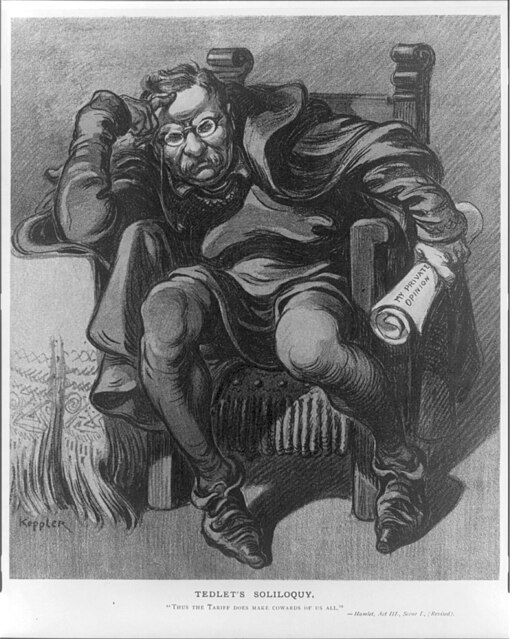Strong literary analysis depends on a clear line of reasoning: every paragraph must support the thesis with well-chosen textual evidence and thoughtful commentary writing. Whether analyzing a short story, a poem, or a novel on the AP® Literature exam, using the claim, evidence, reasoning (CER) structure helps create a convincing argument.
What We Review
What Is a Thesis Statement?
A thesis is the central idea of your essay. It should clearly interpret how an element of the text—such as character, theme, or symbol—reveals a deeper message.
Example: In The Great Gatsby, a strong thesis might be: “Gatsby’s lavish parties reflect his desperation for acceptance, suggesting the American Dream is a fragile illusion rooted in social class.”
This statement links a specific detail (Gatsby’s parties) to a larger theme (the American Dream). It offers an interpretation worth exploring.
Introducing the Claim, Evidence, Reasoning (CER) Framework
Good literary essays often follow the CER approach. First, they present a claim tied to the thesis. Next, they offer textual evidence. Finally, they explain why that evidence matters.
Overview:
- Claim: A statement about the text that supports the thesis
- Evidence: A quote, paraphrase, or summary
- Reasoning (Commentary): Your interpretation that links the evidence to the claim
The Role of Textual Evidence
Textual evidence includes direct quotes, paraphrases, or summaries that support your thesis.
Types of Evidence:
- Quotes: Exact lines from the text
- Paraphrases: Reworded ideas that keep the original meaning
- Summaries: Condensed versions of scenes or events
Claim, Evidence, and Reasoning Examples:
- Claim: Hamlet’s hesitation reveals the emotional cost of revenge.
- Evidence: “Thus conscience does make cowards of us all” (Hamlet, Act 3).
- Reasoning: This line shows how Hamlet’s internal conflict prevents action, emphasizing the theme of moral struggle.

What is Commentary Writing?
Commentary writing explains why your textual evidence matters. It goes beyond repeating what the text says. Good commentary makes inferences—logical conclusions drawn from what the text implies but doesn’t directly state.
Example: In Beloved, Morrison writes, “Some things just stay.”
Commentary: This line suggests that trauma lingers long after the events have passed, reinforcing the novel’s theme of memory and survival.
How to Develop a Strong Line of Reasoning
Your line of reasoning connects your thesis to each paragraph in a logical sequence. Think of it as the backbone of your argument.
To build one:
- Start with a topic sentence tied to your thesis
- Provide relevant textual evidence
- Use commentary writing to explain the quote’s meaning
- End by reinforcing how it supports your argument
Example of a Complete CER Argument
In Zora Neale Hurston’s Their Eyes Were Watching God, Janie’s changing ideas of love reflect her growing independence after each marriage.
- Claim: Janie’s changing ideas of love reflect her growing sense of independence.
- Evidence: “She called in her soul to come and see.”
- Reasoning: This line shows Janie’s inner voice growing stronger. Because she invites her soul to witness her experience, she shows a shift from dependence on others to self-reliance.
Step-by-Step Breakdown
- Craft a precise claim about Janie’s changing identity
- Choose a quote that shows her personal growth
- Write commentary that connects the quote to the theme of independence
Practice Your Skills: Writing Exercise
Choose a short passage from a story or play. Make a claim, find one or two pieces of textual evidence, and explain how that evidence supports a deeper theme. Try this with Hamlet or a classic short story.
Quick Reference Chart: Key Vocabulary
| Term | Definition |
| Thesis Statement | A concise, specific claim that expresses the main argument or interpretation in a literary analysis. |
| Textual Evidence | Quotes, summaries, or paraphrases from the text used to support the essay’s thesis. |
| Commentary | Explanation of how the evidence supports the thesis, focusing on interpretive insights rather than mere summary. |
| Line of Reasoning | The logical flow of an argument, ensuring each point aligns with and supports the central claim. |
| Claim, Evidence, Reasoning | A framework for constructing arguments by stating a claim, supporting it with evidence, and explaining the connection through reasoning or commentary. |
| Inference | A conclusion drawn from subtle clues in the text, moving beyond what is explicitly stated. |
| Literary Analysis | The process of examining how various elements (theme, character, style) interact in a work of fiction, drama, or poetry. |
| Make Inferences | Interpreting hidden or implied meanings within a text by looking at context clues and textual details. |
| Commentary Writing | The act of elaborating on why a specific piece of evidence is important to the thesis, further developing the argument’s depth and significance. |
Conclusion
Every book, poem, or play offers material for analysis. A strong essay weaves textual evidence with a focused thesis and a clear line of reasoning. Use claim, evidence, and reasoning to build strong arguments. When you make inferences and write thoughtful commentary, you show not just what a text says, but why it matters.
Sharpen Your Skills for AP® English Literature and Composition
Are you preparing for the AP® English Literature and Composition test? We’ve got you covered! Try our review articles designed to help you confidently tackle real-world AP® English Literature and Composition problems. You’ll find everything you need to succeed, from quick tips to detailed strategies. Start exploring now!
- AP® English Literature: Claim and Evidence
- AP® English Literature: How to Write a Thesis Statement
- AP® English Literature: Textual Evidence
- AP® English Literature: Elements of Composition
Need help preparing for your AP® English Literature and Composition exam?
Albert has hundreds of AP® English Literature and Composition practice questions, free response, and full-length practice tests to try out.








